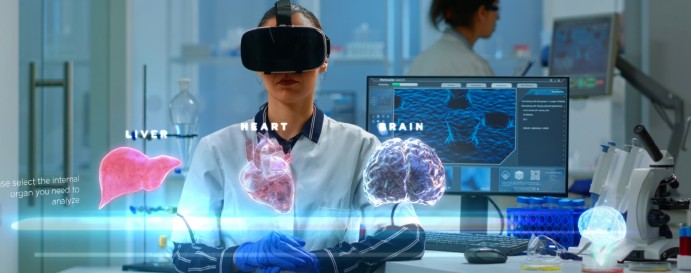
AI in medical devices enhances diagnostics, therapy, and monitoring. Discover the impact of AI solutions for healthcare in medical device software.
AI in medical devices enhances clinical technology by enabling real-time signal analysis and timely responses. These devices assist care teams to improve outcomes and adapt as healthcare evolves.
This blog will present an overview, key applications, challenges, and future trends, and how this technology is revolutionizing the healthcare sector.
AI in medical devices means using artificial intelligence to enhance medical tools and systems. This includes many applications, like imaging machines that help doctors find diseases early. It also addresses diagnostic equipment that evaluates patient risk and recommends treatments. Deep learning and machine learning are crucial in these developments.
Medical equipment uses AI algorithms like neural networks and deep learning in both hardware and software. In hardware, AI helps imaging machines interpret scans and find issues like tumors. In software, AI analyzes patient data. It forecasts outcomes, identifies trends, and recommends individualized treatments. This is intended to make devices smart and precise, allowing clinicians to deliver improved care.
AI technology in healthcare devices has key applications that are advancing the field. These innovations improve accuracy, efficiency, and personalization in patient care.
Convolutional neural networks (CNNs) and attention-based models analyze CT, MRI, and PET scans in real time, detecting abnormalities related to cancer, stroke, or neurodegeneration with high accuracy.
In digital pathology, AI platforms examine gigapixel whole-slide images. They automate tumor grading, detect mitotic figures, and quantify biomarkers. Researchers test these systems on large, annotated data sets. They connect to clinical processes through DICOM-compatible interfaces.
Wearables use onboard machine learning, including LSTM networks, to process biosignals like ECG, SpO₂, and glucose in real time without constant cloud access. Data from these devices goes into predictive analytics platforms. This supports remote clinical interventions and ongoing care.
Robot surgery systems use reinforcement learning, computer vision, and sensor fusion. These tools help with semi-autonomous tasks. These tasks include suturing, tissue classification, and trajectory planning.
Real-time decision support systems analyze data during surgery. They help adjust tool movement, locate anatomical landmarks, and avoid injuries. Embedded processors enable this functionality. This requires stable execution. So, real-time operating systems (RTOS) and high-performance firmware are essential.
AI analyzes patient responses to personalize drug delivery, adjusting dosages in real time based on physiological data. Closed-loop infusion pumps and implantable devices use adaptive control methods. They gather sensor feedback without interruption to improve therapy.
Often, these systems use reinforcement learning agents trained in simulations. This helps balance drug effectiveness and cut side effects.
© 2024 Crivva - Business Promotion. All rights reserved.